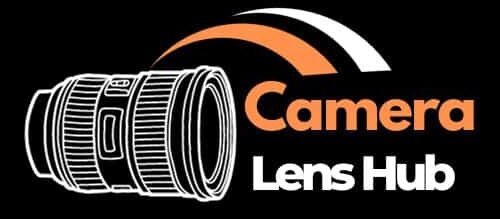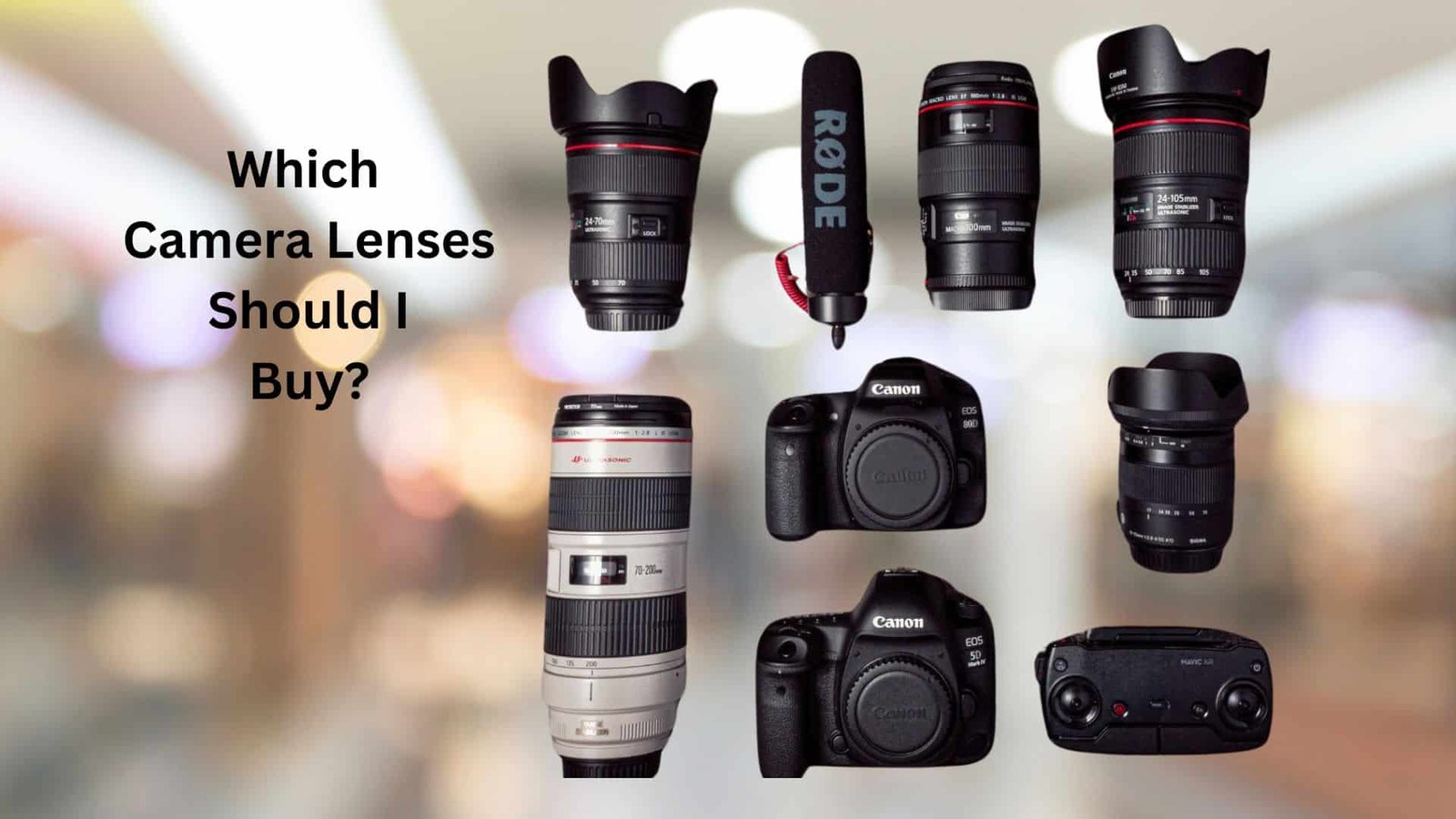As photographers, our lenses are the windows to the world, shaping our perspective and defining the stories we tell. But faced with a myriad of options, choosing the right lenses can be a daunting task. From capturing sweeping landscapes to intimate portraits, each photographic genre demands a specific set of tools to unlock its full potential.
In this guide, we embark on a journey to demystify the lens selection process. Whether you’re a seasoned pro or a budding enthusiast, we’ll explore the essential lenses that should grace every photographer’s kit. From versatile zooms to razor-sharp primes, we’ll delve into the characteristics that make each lens indispensable. Together, we’ll uncover the lenses that empower us to capture life’s moments with clarity, creativity, and passion. Join us as we navigate the lens landscape and discover which camera lenses you should have in your arsenal.
Understanding Camera Lenses:
Most photographers benefit from having a wide-angle zoom, a standard zoom, and a telephoto zoom to cover the basic focal length ranges. This allows capturing landscapes, portraits, and wildlife/sports from varying distances. A fast prime lens like a 50mm is ideal for available light situations too. Beyond those core lenses, special-purpose lenses like a macro for close-ups or fisheye for unique angles can be added. Your lens kit should grow based on the genres and subjects you enjoy shooting most. With the right lenses, you’ll be equipped to tackle nearly any photographic challenge.
Identifying Your Current Camera Lenses:
One of the most important aspects of your camera system is the lens. To get the most out of your lens, it’s essential to identify which specific model you have.
Begin by inspecting the lens barrel, and the metal exterior of the lens. This is often where you’ll find the lens name engraved or printed. Common details include the brand, focal length, and maximum aperture. Check the rear lens cap next if no identification is on the barrel. Lens specs are frequently moulded or printed on the underside here as well. The lens name may also be included in a numeric code. As a last resort, refer to your camera’s instruction manual. Lens specifications are usually listed that can narrow down the model. You can also search online with your camera make and basic lens details like focal length.
Newer cameras sometimes identify lenses automatically as soon as they’re put on. You can also confirm via your camera’s setup menu or by taking a pic and checking exif data. With a little sleuthing of the lens barrel, cap, manual, or online, you can discern exactly which lens is equipped to help optimize your photography. Proper identification is key for using lenses to their fullest potential.
Which Camera Lenses Do I Need?
Factors to Consider:
- Focal Length – Do you need a wide-angle, standard, telephoto, or zoom lens? Consider the type of scenes and subjects you shoot most.
- Aperture – Look at the maximum aperture, like f/1.8 or f/4. Wider apertures allow more light and shallower depth of field.
- Image Quality – Sharpness, colour rendition, and build quality can vary. Check lens reviews for quality expectations at different price points.
- Autofocus – Pick a lens that focuses quickly, silently, and accurately for your shooting needs like sports, portraits, or videography.
- Size and Weight – Consider lens dimensions and weight, especially if you frequently carry your camera. Some lenses are bulky while others are compact.
- Specialization – Do you need a macro, fisheye, or telephoto lens? Evaluate lenses specialized for certain scenes like tight product shots.
Overview of Popular Camera Lens Types:
1. Prime Lenses:
Prime lenses are highly valued in videography for their superior image quality, low-light performance, and affordability. With a fixed focal length, prime lenses are generally sharper and produce higher-quality video footage compared to zoom lenses. Their wide maximum apertures allow for better low-light shooting and a shallower depth of field, creating a beautiful bokeh effect. Prime lenses are also more compact and portable than their Zoom counterparts, making them a practical choice for video shooters. Common focal lengths recommended for videography include 24mm, 35mm, 50mm, and 85mm, as they provide a good range of perspectives and framing options. The main tradeoff is the lack of versatility, as the camera operator has to physically move to recompose shots instead of just zooming
2. Zoom Lenses:
Zoom lenses offer a variable range of focal lengths, allowing photographers to adjust their composition without changing lenses. They provide versatility by enabling the photographer to zoom in or out to magnify or widen the subject within the frame. Common zoom lenses include 24-70mm, 16-35mm, and 70-200mm, offering a range of focal lengths suitable for various shooting scenarios. While zoom lenses may not match prime lenses in terms of image quality, they are popular for their convenience and flexibility, especially in situations where quick adjustments to focal length are needed. The ability to capture a wide range of perspectives without the need to switch lenses makes zoom lenses a practical choice for photographers looking for adaptability and ease of use.
3. Macro Lenses:
Macro lenses are specialized camera lenses designed for extreme close-up photography, allowing users to capture intricate details and magnify small subjects to life-size (1:1) or greater on the camera’s sensor. These lenses are characterized by their short minimum focusing distances, typically ranging from 12 to 47 centimetres, and high magnification ratios. Common focal lengths for macro lenses include 45-65mm, 90-105mm, and 150-200mm, each offering different working distances and perspectives. Macro lenses excel at photographing small objects like insects, flowers, and product details, revealing incredible levels of detail. However, their narrow depth of field at high magnifications requires careful focusing and often the use of auxiliary lighting or focus stacking techniques. Beyond macro photography, these lenses can also be used for general photography, portraiture, and even video work, thanks to their optical quality and versatility3. For those interested in exploring the micro world, a dedicated macro lens is an essential tool
Matching Lenses to Camera Models:
Here are some tips for matching lenses to common camera models:
- DSLRs: Most DSLR lenses have a mount type like Canon EF, Nikon F, Pentax K, or Sony A that fits that brand’s camera system. Lenses are interchangeable but stick with your brand.
- Canon EF-S lenses can only be used on Canon DSLRs with an APS-C sensor due to a shorter flange distance. Avoid on full-frame Canon bodies.
- Full Frame cameras accept both full-frame and APS-C/crop lenses, but APS-C lenses will vignette on full frame without cropping.
- Mirrorless cameras use newer mounts like Sony E, Canon RF, Nikon Z, and Fuji X. Adapters let you use legacy DSLR lenses but autofocus may be slower.
- Micro Four Thirds lenses (Olympus, Panasonic) have a small image circle that matches the smaller MFT sensor size.
- Lens mount compatibility depends on flange focal distance matching between lens and body. Manual-focus vintage lenses require matching or longer mounts.
- Zoom lenses are convenient across sensor sizes/makes but prime lenses maximize quality when matched to your specific camera system.
Camera Lenses for Beginners:
Recommendations for Starters
Here are some generally good lens recommendations for photographers just starting:
- Canon EF-S 18-55mm f/3.5-5.6 IS STM – Great everyday zoom lens that comes bundled with many Canon DSLR kits. Very affordable.
- Nikon AF-P 18-55mm f/3.5-5.6G VR – Nikon’s beginner standard zoom offering image stabilization and quiet autofocus. Also a kit lens.
- Sony E PZ 16-50mm F3.5-5.6 OSS – A versatile and affordable E-mount lens to start with Sony APS-C mirrorless cameras.
- Olympus M.Zuiko 14-42mm f/3.5-5.6 EZ – Small, lightweight zoom lens that won’t overwhelm new Micro Four Thirds shooters.
- Sigma 30mm f/1.4 DC DN | C – An inexpensive but high-quality prime lens that teaches composition skills. Works well on several systems.
- Canon EF 50mm f/1.8 STM – An affordable nifty fifty prime to learn skills like depth of field and subject separation.
- Rokinon 12mm f/2.0 NCS CS – Very wide manual prime that encourages creativity on a budget for Sony, Canon, and Nikon APS-C.
Always get the kits with your camera body if possible since they offer great value and flexibility to learn. Develop techniques before investing heavily in glass.
Lens Maintenance and Care:
Here are some tips for maintaining and caring for your camera lenses:
- Clean lens elements regularly with a camera lens pen or microfiber cloth to remove fingerprints and smudges. This avoids defects in images.
- Dust and debris can affect image quality – use a blower brush to dislodge any particles stuck to lens elements gently.
- Avoid excessive rubbing which could potentially scratch coated surfaces. Only use products designated for lens cleaning.
- Lens caps protect the front and back elements when not in use. Replace caps immediately after shooting.
- Store lenses in a protective pouch or case to prevent damage from bumps during transport.
- Keep lenses away from moisture and extreme temperatures which can cause fogging or breakdown of internal components.
- Periodic calibration by the manufacturer or a pro can ensure lenses remain accurately focused over time.
- Proper cleaning and lubrication of mechanical parts like zoom and focus rings keep lenses functioning optimally.
- Avoid direct sunlight that could damage coatings by overheating over long periods.
Conclusion
In summary of which camera lenses should I have, choosing the right camera lens requires evaluating your photographic style and subject matter. Consider factors like focal length range, maximum aperture, autofocus type, image stabilization, and intended use such as landscapes, portraits or macro shooting. Your budget also plays a role in narrowing options between kit zooms, mid-range lenses, and high-end professional glasses. While versatile zoom lenses are ideal for beginners learning composition, prime lenses maximize sharpness in low light. Develop your skills and understanding of common lens types, mounts, capabilities, and key specifications. With practice and research, you can select lenses that fulfil your creative vision and take your photography to the next level.
People Also Ask
Q: What are the key features to consider when choosing a camera lens?
Ans: When selecting a camera lens, consider factors such as aperture, focal length, and image stabilization. The aperture affects the amount of light entering the lens and the depth of field. The focal length determines the angle of view and the magnification of the subject.
Q: What are the main types of camera lenses?
Ans: There are two main types of camera lenses: prime lenses and zoom lenses. Prime lenses have a fixed focal length and are known for their high image quality and shallow depth of field. Zoom lenses offer a variable focal length and are useful for capturing a range of perspectives without changing lenses.
Q: How do I choose the right lens for my camera?
Ans: To choose the right lens for your camera, consider the lens mount compatibility, the type of photography you will be doing (e.g., stills or video), and the specific features you need (e.g., image stabilization or wide aperture).
Q: What are the benefits of using a zoom lens?
Ans: Zoom lenses offer flexibility and convenience, allowing you to adjust the focal length without changing lenses. They are particularly useful for capturing a range of perspectives without the need for multiple lenses.
Q: What are the benefits of using a prime lens?
Ans: Prime lenses are known for their high image quality and shallow depth of field. They are particularly useful for capturing portraits or close-up shots where a shallow depth of field is desired. Prime lenses also tend to be more compact and lightweight than zoom lenses, making them easier to carry and use in certain situations

